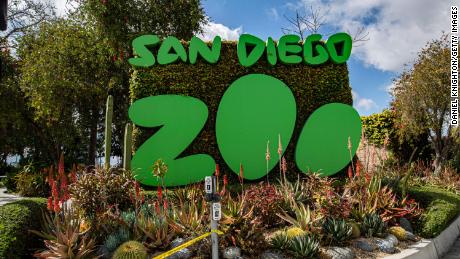People are the likely source, but that doesn’t mean the virus can’t evolve among these animals and then spill back into humans, and researchers are worried about what this spread means for the risk of future pandemics.
There’s little doubt SARS-Cov-2, the virus that caused the ongoing pandemic, came from an animal — almost certainly a bat. And the prevailing scientific opinion is that there as an intermediate host, an animal of some sort, that was infected by a bat or bats and then infected people.
It’s also clear that people can infect animals. Pets such as cats, zoo animals such as gorillas and snow leopards and farmed mink can all be infected. Multiple cases have been reported, and evidence of changes in the viruses infecting mink have led to mass culls of those animals on fur farms.
The latest species to capture the attention of wildlife biologists are white-tailed deer. It’s little surprise that farmed deer would catch the virus from people. Any visitor to a deer farm knows the animals behave like goats, shoving their wet noses into the pockets, hands and faces of human visitors or caregivers as they clamor for food and treats — and setting themselves up for infection.
But how are wild deer catching it?
Viral spread among deer
published earlier this month that found a third of deer they tested across Iowa between September of 2020 and January of 2021 showed evidence of infection.
Sewage has been found to carry the virus, so polluted water might be a source, he added, or people spitting or contaminating the environment in other ways. The deer may then spread the virus to one another.
“Keep in mind these are highly susceptible animals and while you do not know how much virus they need to be infected,” Kuchipudi told CNN. “It raises the urgent question — we know the deer are effectively transmitting virus among themselves, and then who are they giving it to?”
It’s also possible another species could be picking up the virus from people and infecting deer.
“We don’t know what’s going on in our very own country and we need to find out,” said Hon Ip of the United States Geological Survey in Wisconsin.
Viral hotspots among the rodents
Ip and colleagues tested animals they found around a mink farm that was the site of an outbreak in Utah and found skunks, mice and other animals were susceptible to a variety of coronaviruses.
They were originally worried that the mink, which caught the virus that causes Covid-19 from people, might infect the local wildlife. They found no indication of that. “It was a very pleasant surprise,” Ip told CNN.
But the mice, raccoons, skunks and other animals carried a load of other coronaviruses. “The number of coronaviruses and the diversity was a surprise,” Ip said.
published in the journal Viruses in October.
Researchers like Ip and Kuchipudi say much more study like this is needed.
published research in July that found 40% of deer tested in four states had antibodies to the SARS-CoV-2 — evidence they’d been infected.
There are several reasons scientists do not want to see a virus like the one that causes Covid-19 infecting animals. For one, it creates what’s known as a reservoir — so that even in the unlikely case that everyone got vaccinated and the virus stopped circulating among people, it would still circulate among animals and could re-infect people eventually.
More likely however, is the risk that it could change and evolve. That can happen in two ways.
One is steady adaptation. As it infects different species, the virus will change to better adapt to those species and that could make it either more or less dangerous to humans.
Another route to change: viruses can take shortcuts by swapping big chunks of genetic material in a process called recombination. Influenza is especially good at this, but coronaviruses can do it, as well. If an animal is infected with more than one coronavirus at a time, the two types can mix and match genes and potentially come up with new variants.
“Recombination is one of the major mechanisms for coronavirus evolution,” Ip said. So if animals are already carrying their own varieties of coronavirus, and people are then infecting them with strains that cause pandemics among humans — the potential exists for these viruses to infect animals at the same time, trade genetic material, and give rise to new pandemic viral species.
Pandemic origins
“This raises very urgent questions about the trajectory of this pandemic,” Kuchipudi said.
If there are animals out there like white-tailed deer that are so easily infected and that so easily transmit the virus among themselves, that’s a red flag.
That means much better surveillance is needed to see what other animals might be getting infected by people or by other animals, and what threat they might pose to other animals and to people.
“We need to be prepared for any variants that might emerge,” he said.
Plus, Ip said, surveillance is needed to know what coronaviruses are living in animals that might be the source of the next pandemic — not just among bats in remote caves in southeast Asia, but perhaps among mice or deer or raccoons in the backyards of the US Midwest.
And people need to remember that humans are the primary source of the spread of the virus. Even if Covid-19 originally came from animals, humans are the species that have amplified and spread it.
And there’s one answer to that spread. “Vaccination rates are not uniform across the world,” Kuchipudi said. “As long as there are susceptible human beings, we give opportunities for the virus to circulate and change. There need to be more concerted efforts to vaccinate as many people as possible so that we can at least minimize transmission among human beings.”







